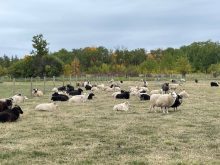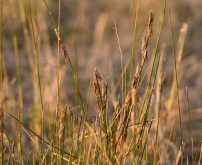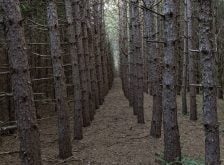Here are 10 of the more important disease and weed issues in Western Canada, but I could easily add 10 more.
1. Clubroot of canola
2. Cereal cyst nematode
3. Soybean cyst nematode
4. Aphanomyces root rot of peas and lentils
5. Verticillium wilt of canola
6. Sudden death syndrome of soybean
7. Potato cyst nematode
8. Potato powdery scab
9. Sclerotinia white mould
10. Problem herbicide-resistant weed issues
Farmers should never accept the fact that any of the above disease or weed problems are inevitable. All can be slowed, stopped or prevented access to farmed cropland, where they could cause major crop yield losses or quality issues.
Read Also

Claas brings 1000 Series SP forage harvesters to Canada
In mid-August, Claas unveiled its new line of Jaguar forage harvesters at an event in Visalia, California, deep in the heart of that state’s dairy region.
Farmers must follow crop biosecurity standards to keep out pest and weed problems. In a previous article, I pointed out the success of the Alberta Rat Control Program and the province’s freedom from Dutch elm disease. Disease prevention can and will work if you follow standard crop biosecurity procedures.
Clubroot of canola
Clubroot is a destructive disease of canola, mustard, cabbage, radish and weeds such as stinkweed, shepherd’s purse and wild mustard.
This destructive root-rotting disease seems to attack all members of the cabbage (crucifer) family. I published several articles about the dangers of clubroot from 1976 onwards to little avail after finding the disease in Alberta backyard gardens. I was not crying wolf. In 2003, with a colleague, I was able to confirm its first widespread occurrence in canola fields north of Edmonton. The rest is history — the horse had left the barn.
We had failed to survey canola fields for new, unusual disease outbreaks.
The clubroot fungus exists in 15 or more races or strains worldwide. Crop losses in Alberta in individual fields have been recorded at 50 per cent or more with susceptible canola varieties, especially in wet years.
How did clubroot move around Alberta?
In clubroot-infested cropland, there can be many millions of long-lived resting spores of this fungus in less than one ounce (a teaspoon) of soil. While we now have clubroot-resistant varieties, this resistance can break down in only a few canola rotations in infested cropland.
Following the discovery of clubroot in canola fields north of Edmonton in 2003, the following year I was able to find clubroot-infested fields in the Edmonton area virtually every time I visited fields with oilfield installations.
The canola crop or volunteers and cruciferous weeds were almost always infected with the clubroot fungus. In other words, oil pump inspection vehicles had done a very effective job of hauling clubroot-infected soil from field to field. Discovery of cropland clubroot was in August of 2003 but it is now suspected this disease had been spreading unchecked from canola field to canola field for perhaps five, 10, or more, years previously.
How does clubroot move around the Prairies? The following is a list of some of the ways clubroot is spread:
1. Your farm equipment moves infested clubroot soil from one field to another (via trucks, quads, sprayers, seeders and combines)
2. Custom seeding equipment
3. Custom harvesting equipment
4. Oilfield service equipment
5. Custom fertilizer operators
6. New pipeline installations by trucks and excavators
7. Powerlines and trucking equipment
8. Recreational equipment, quads and snowmobiles
9. Selling baled straw (trucks moving from field to field)
10. Soil tillage allowing wind to move clouds of soil (clubroot-infested dust) from field to field
All of these practices, by moving clods or clumps of infested soil on equipment, do a classic job in getting clubroot from one field to another, even over long distances of many miles.
Despite the ease by which infested soil can be moved from one field to another, including long distances, there are many growers in the Edmonton and surrounding areas who have cropland that is clubroot-free.
Keeping cropland free of clubroot
Countless times I have driven around the Prairie provinces over the last 16 years and found clubroot-infected canola plants at field entrances in July and August.
This is where the equipment has stopped (tractors, combines and sprayers) and owners have kicked off mud clods while equipment was being inspected. Many times these clods from other fields were the source of clubroot infestations on “clean” land.
If the grower had been using clubroot-resistant varieties, it is likely clubroot would’ve been stopped cold, provided cruciferous weeds were controlled. Clubroot-resistant varieties form a barrier to cropland invasion.
Clubroot-resistant canola varieties only fail over time when they are planted into fields that are already heavily infested with billions of fungal spores. Farmers who do not use resistant varieties now are jeopardizing neighbours’ canola crops. It is from these infested fields we get mutant clubroot strains that can attack clubroot-resistant canola. Farmers who do not plant resistant canola in 2023 are doing a great disservice to their neighbours.
Don’t think clubroot-infested fields are far away from your fields, since many growers have been shocked to find their neighbours’ fields are loaded with spores of this destructive fungus.
If your cropland is presently clubroot-free, keep it that way. Do not allow any mud-carrying equipment of any kind on your cropland other than your own farm equipment. Plant resistant varieties and keep the land clubroot-free to enhance your financial future.
The spread of clubroot in the above discussion is an excellent template for the other nine weed and disease issues we will explore in Part 2 of this feature.
Remember, a pessimist sees the difficulty in every opportunity; an optimist sees the opportunity in every difficulty (Winston Churchill).
















